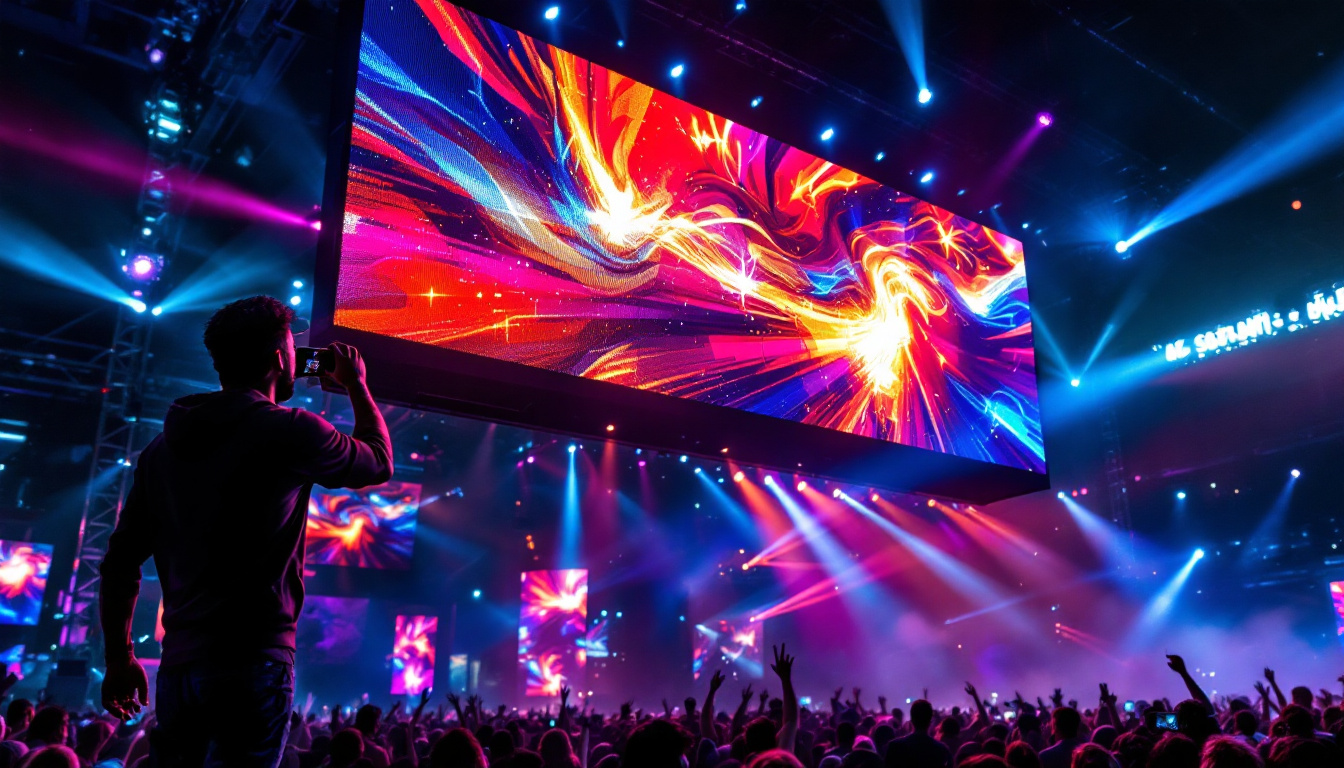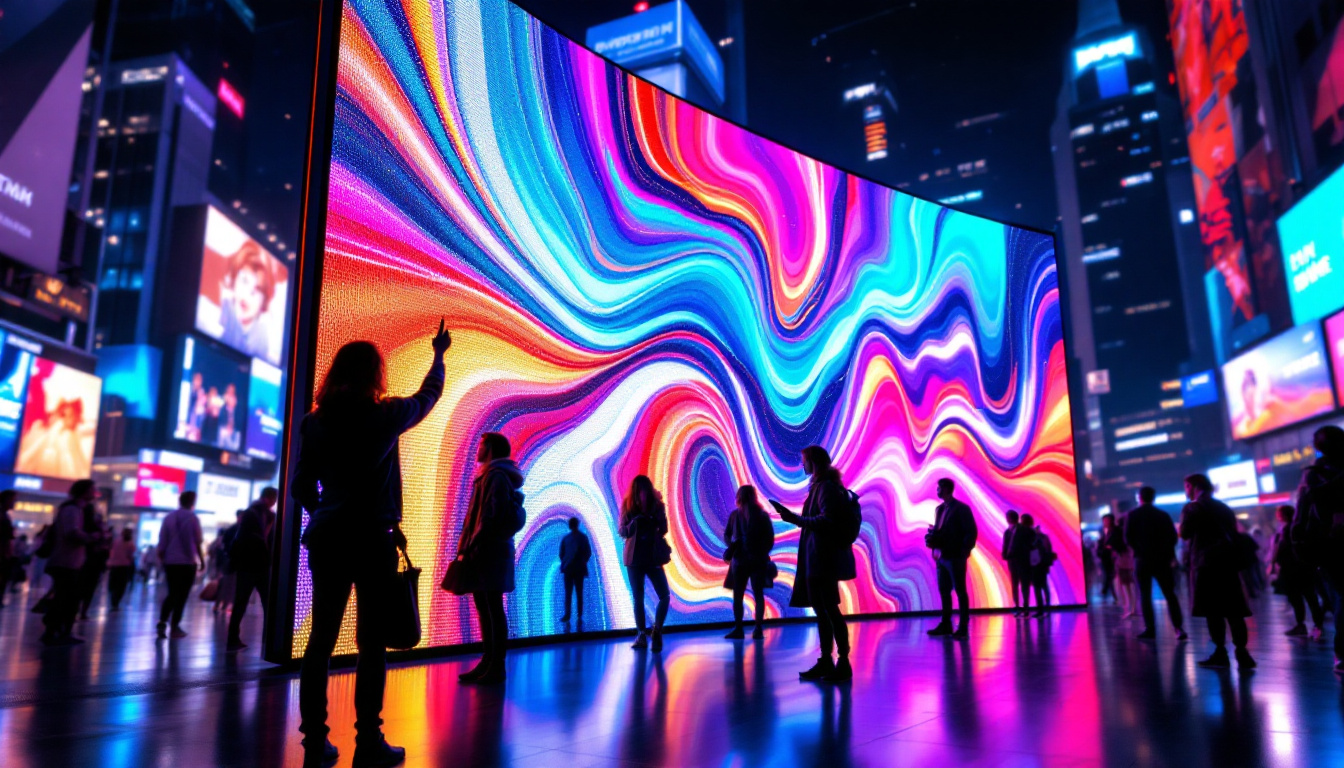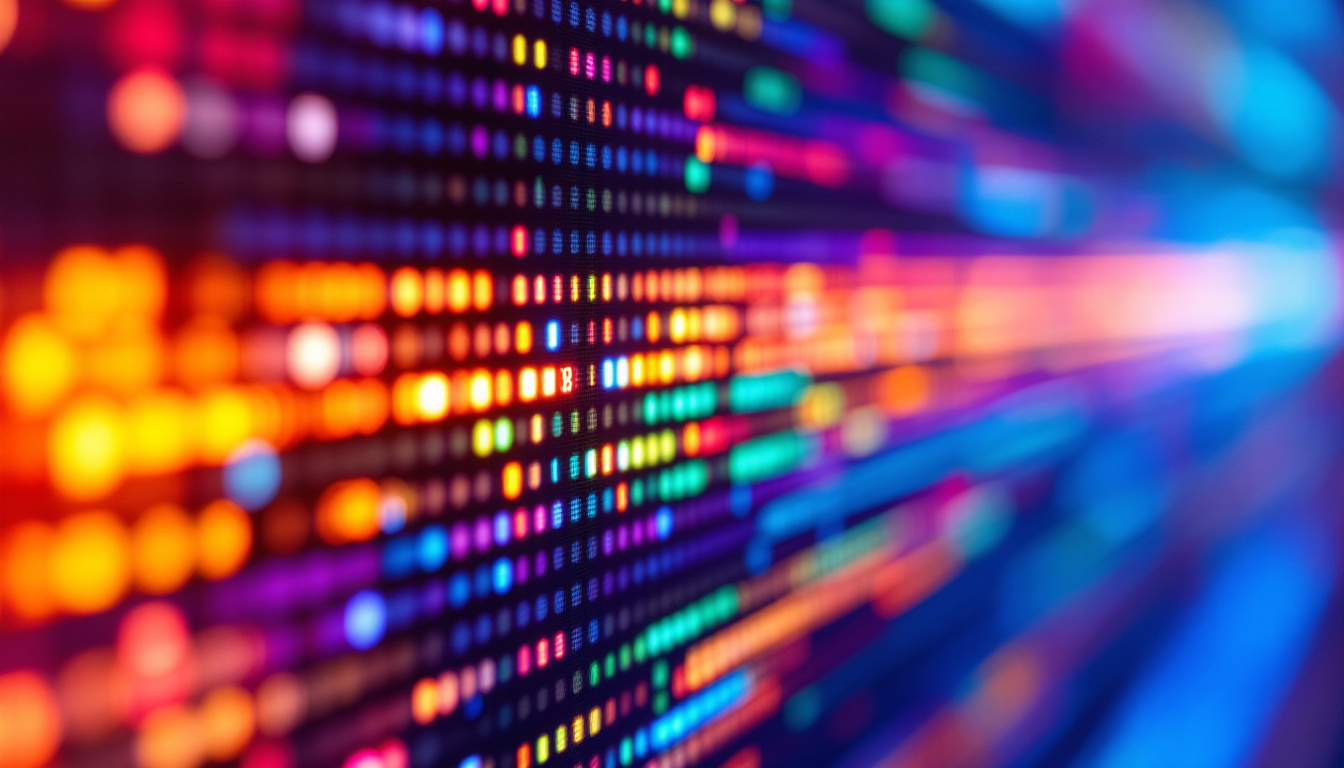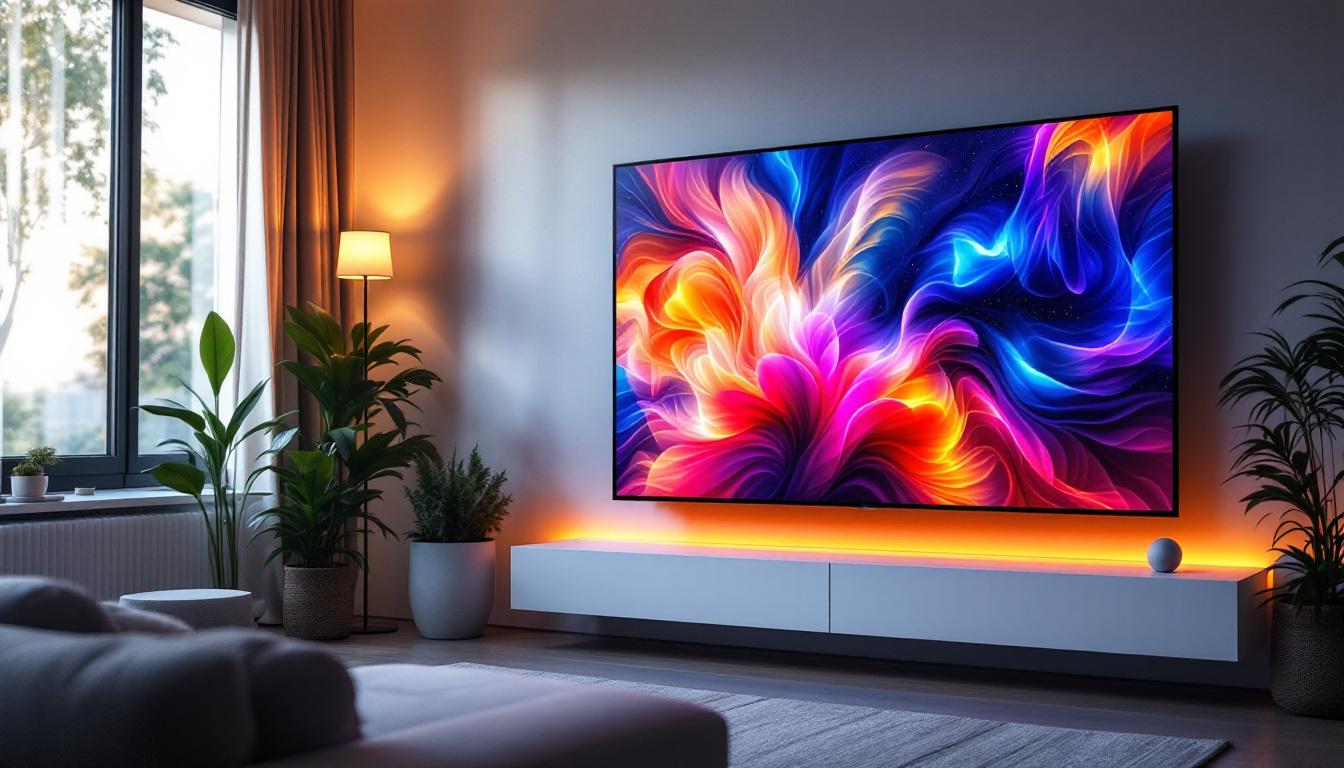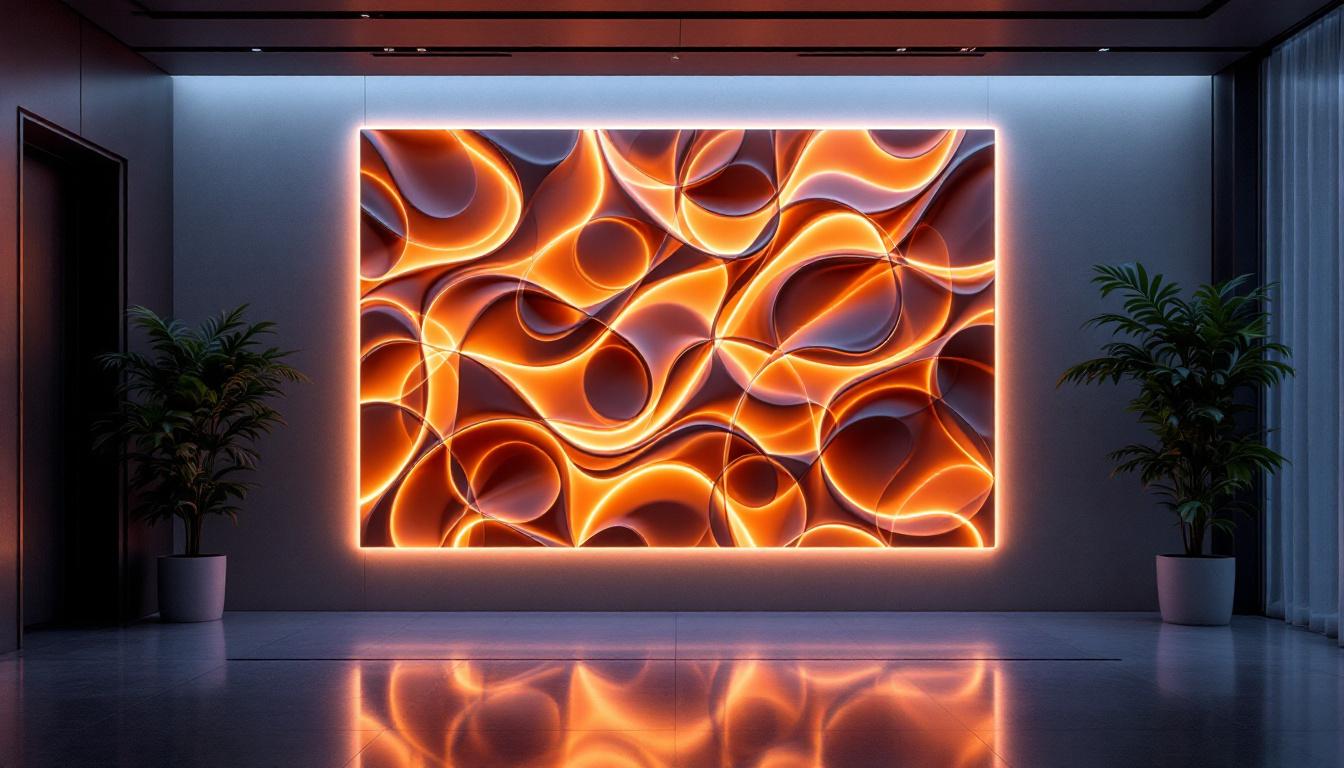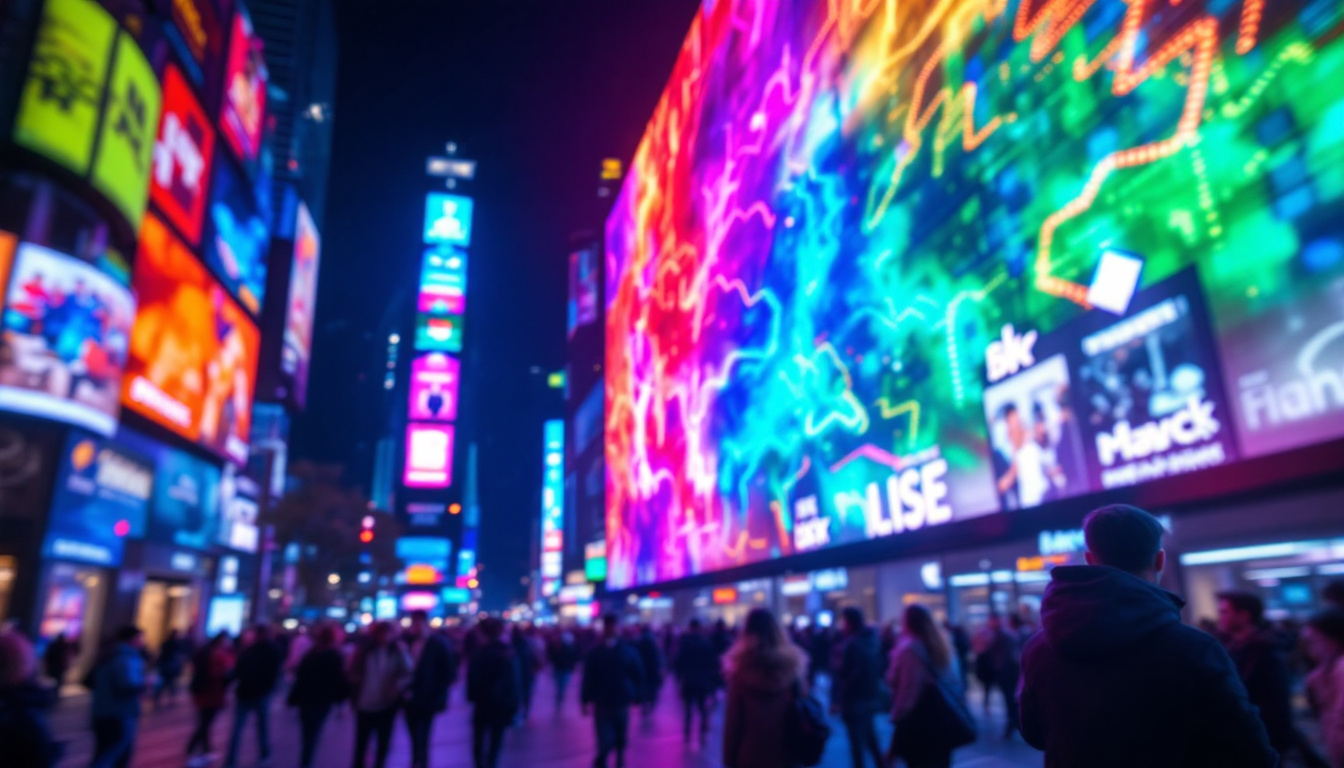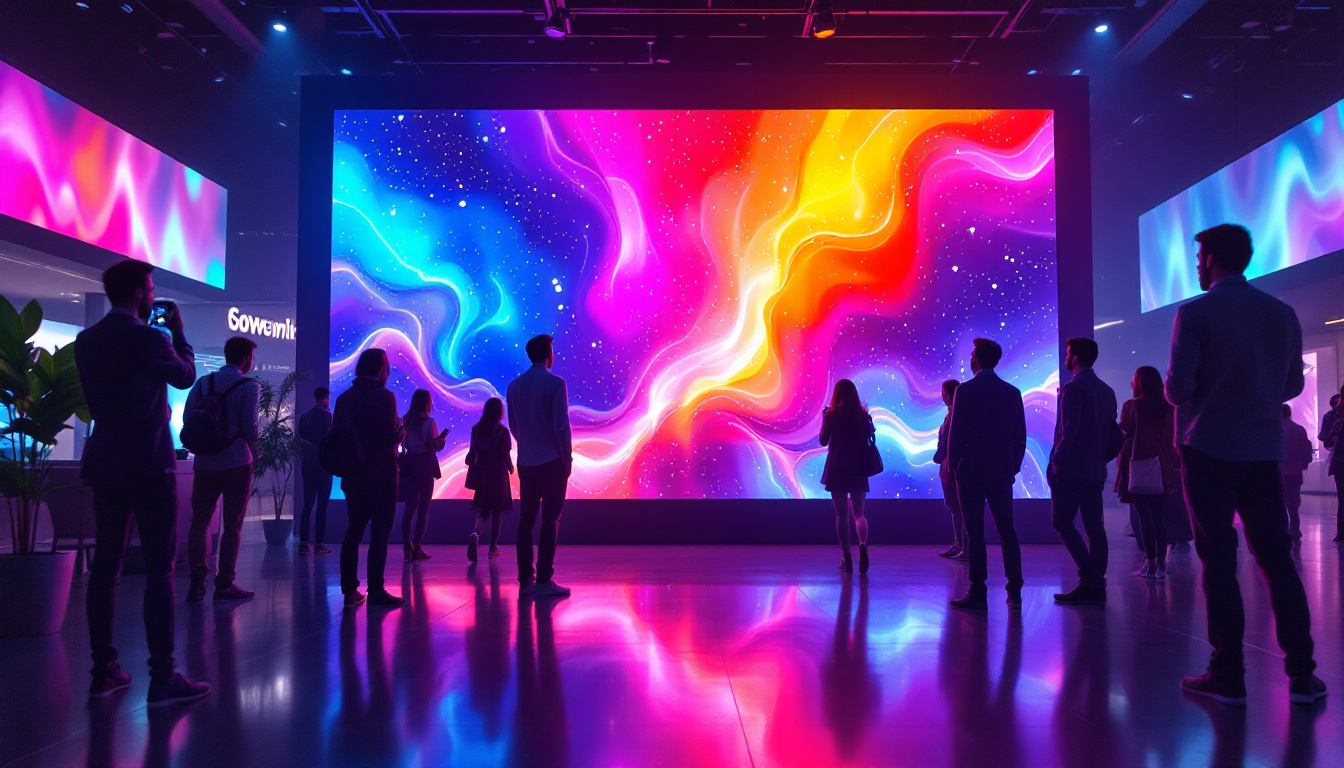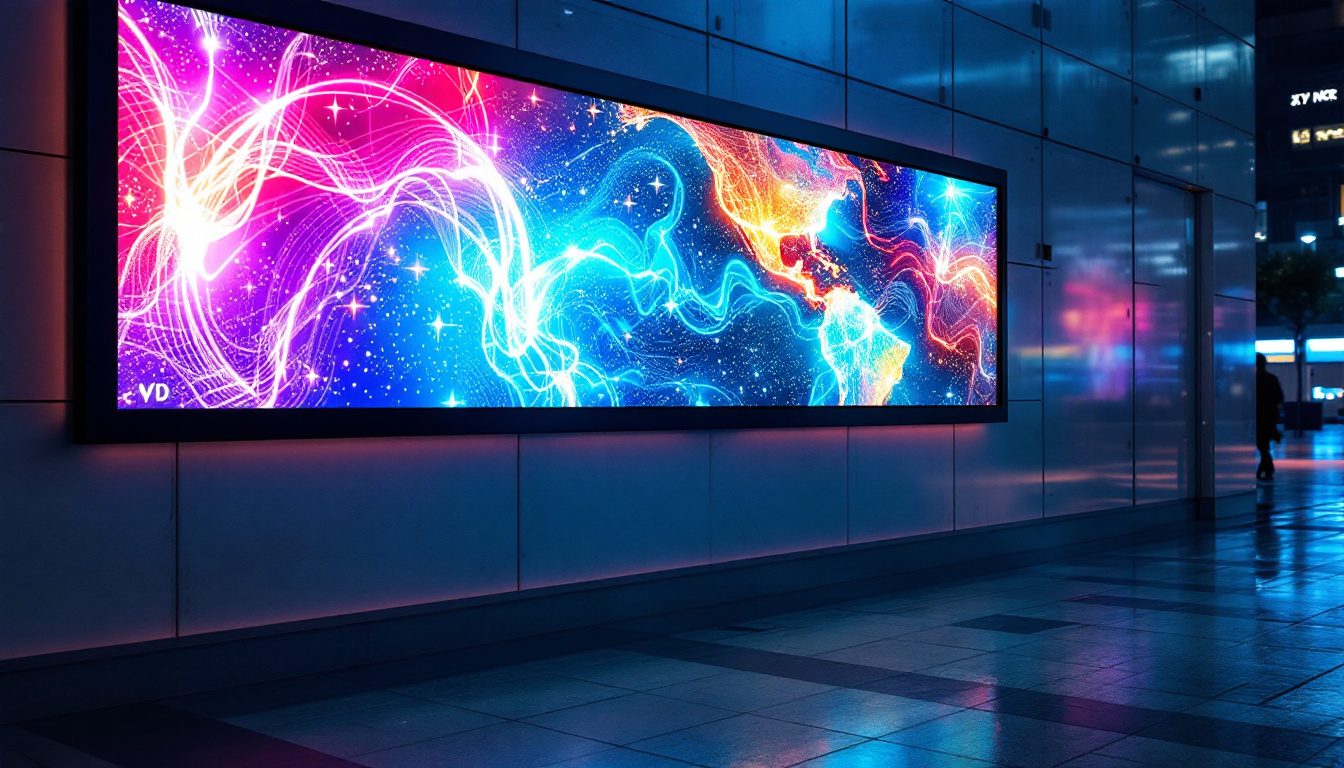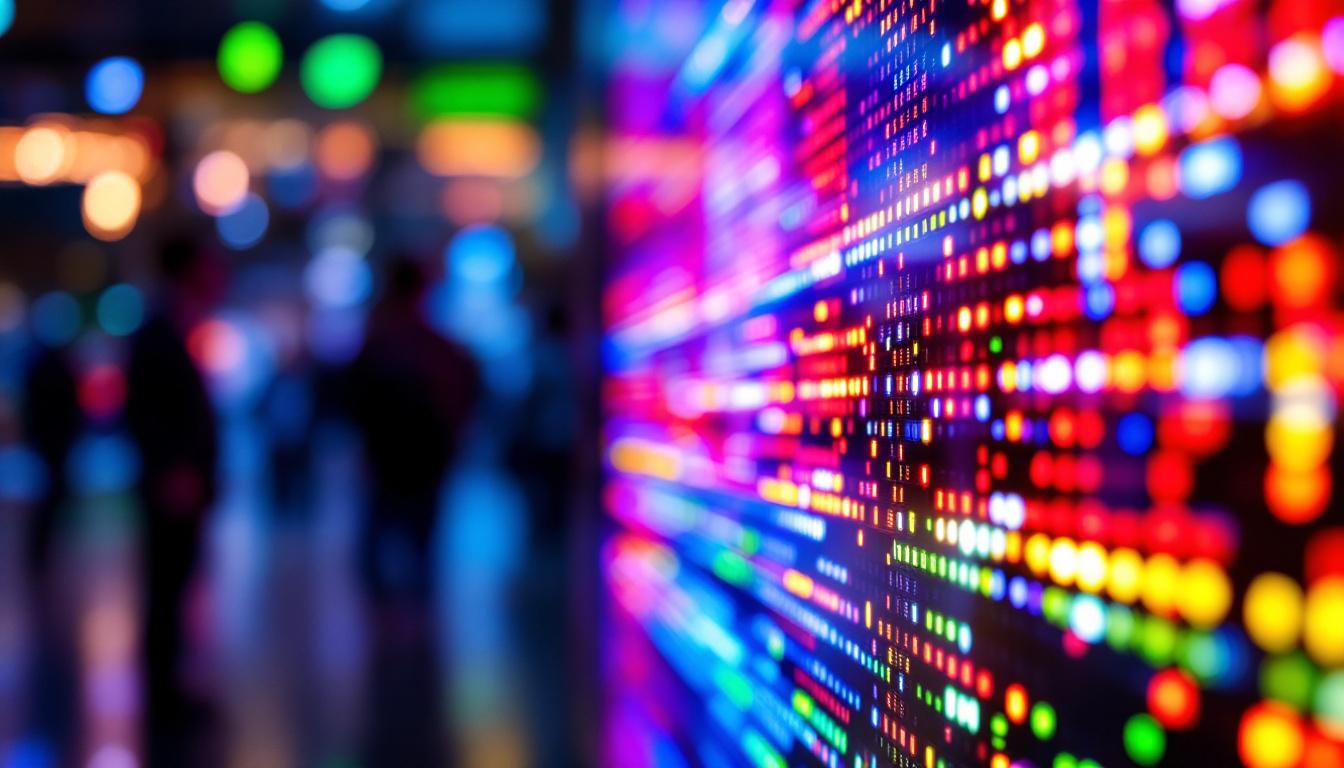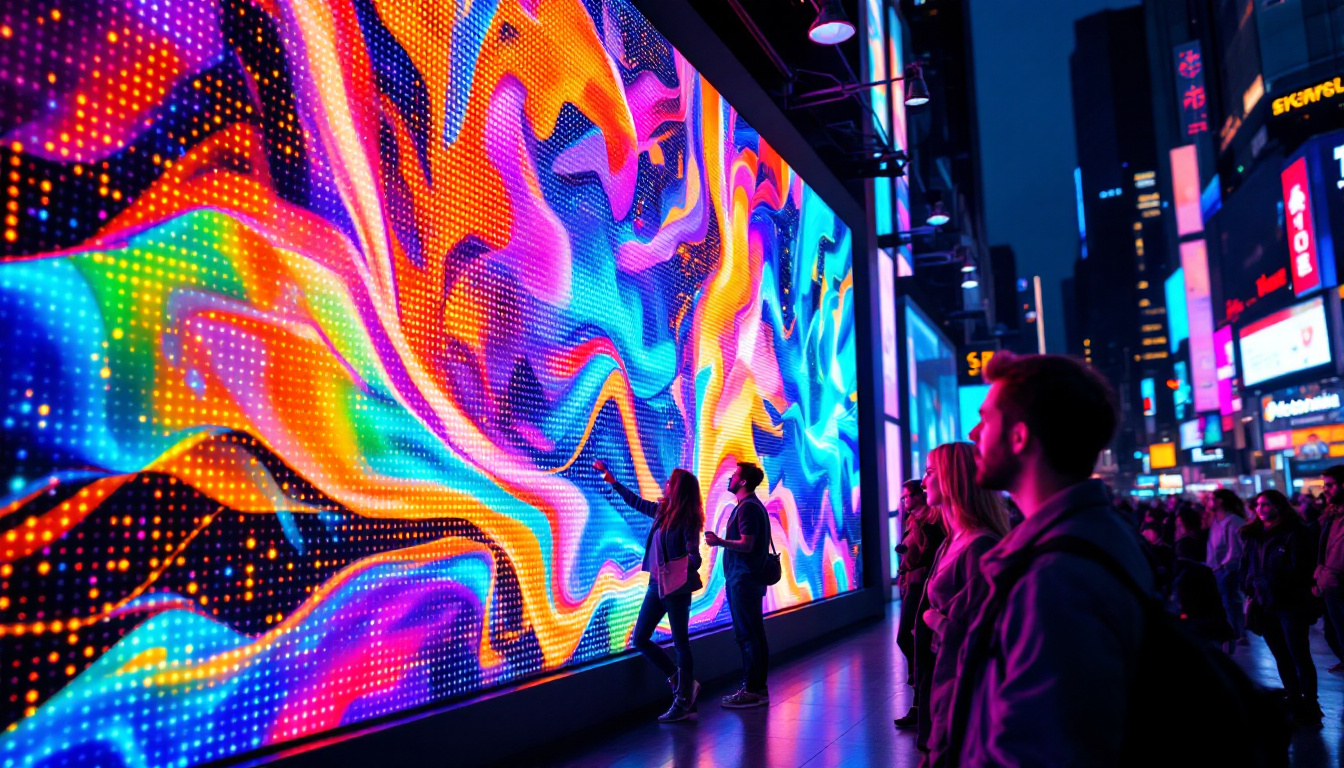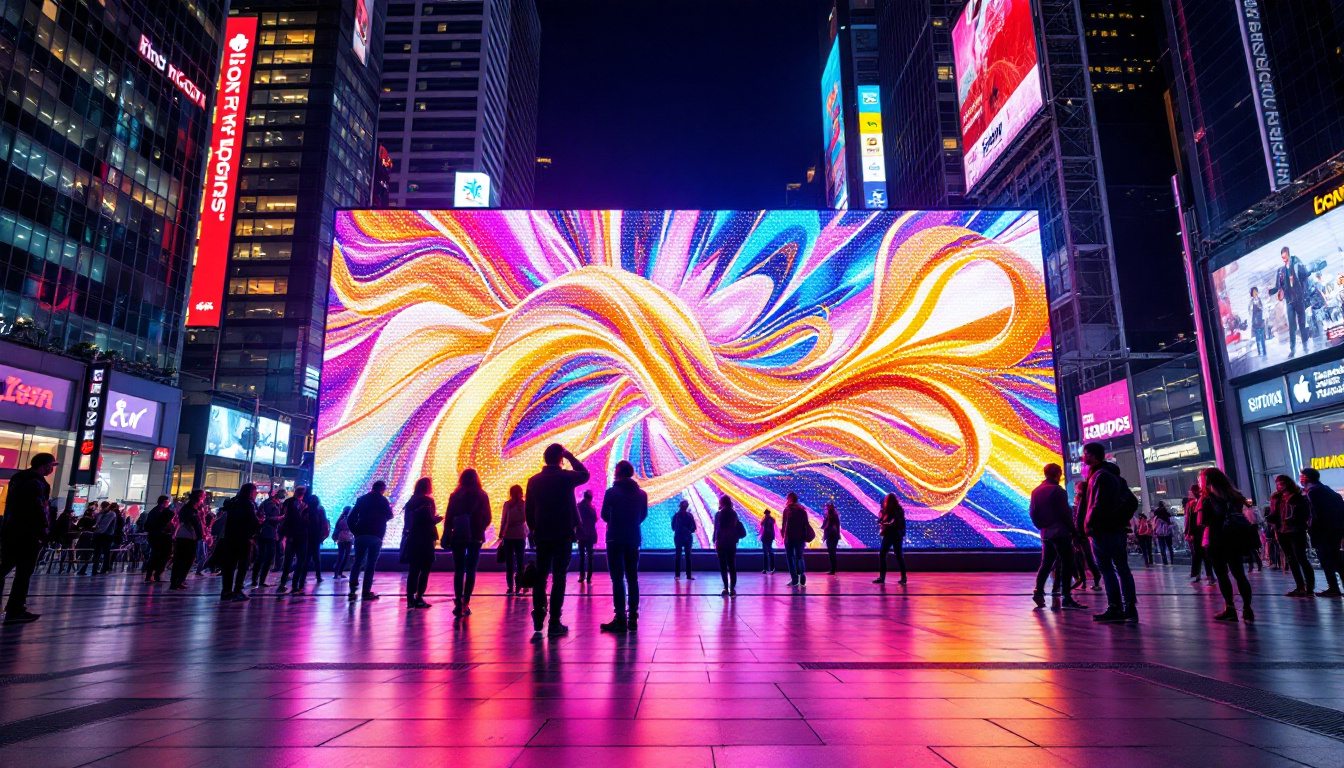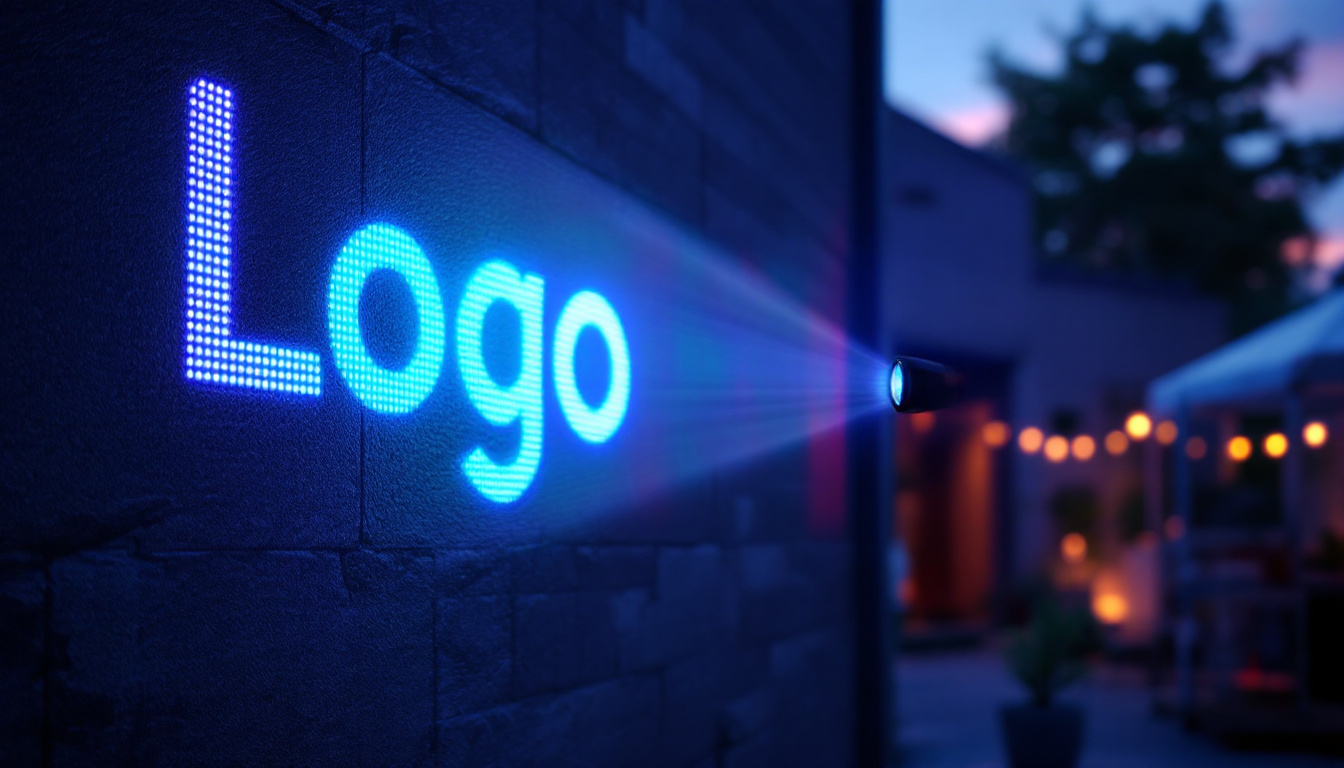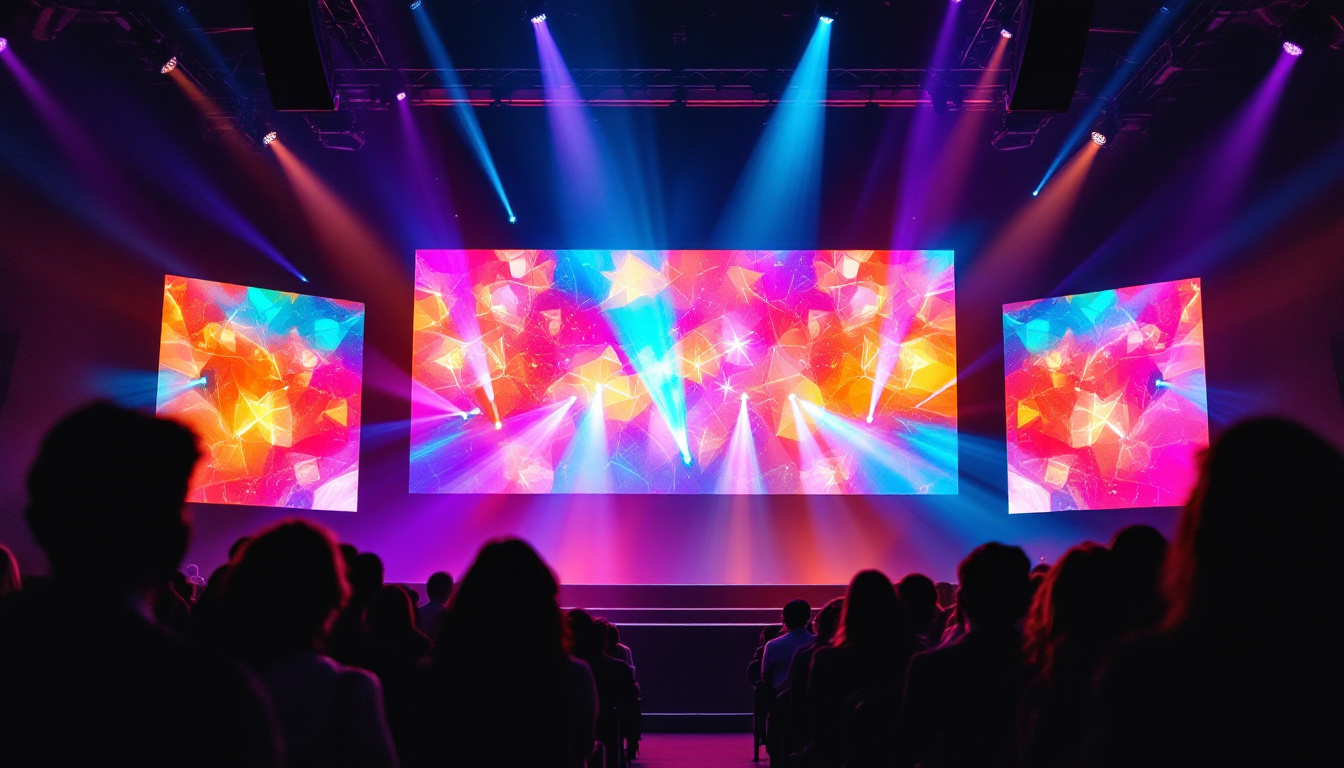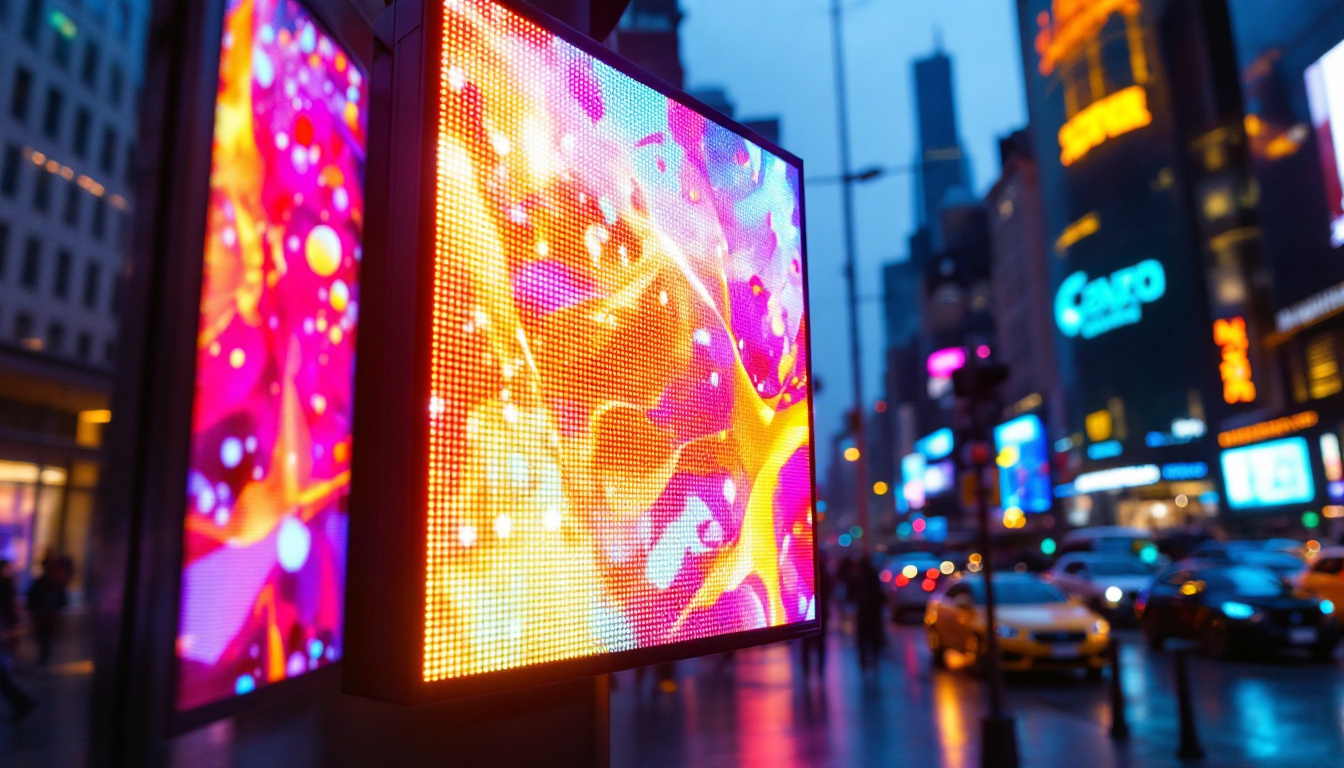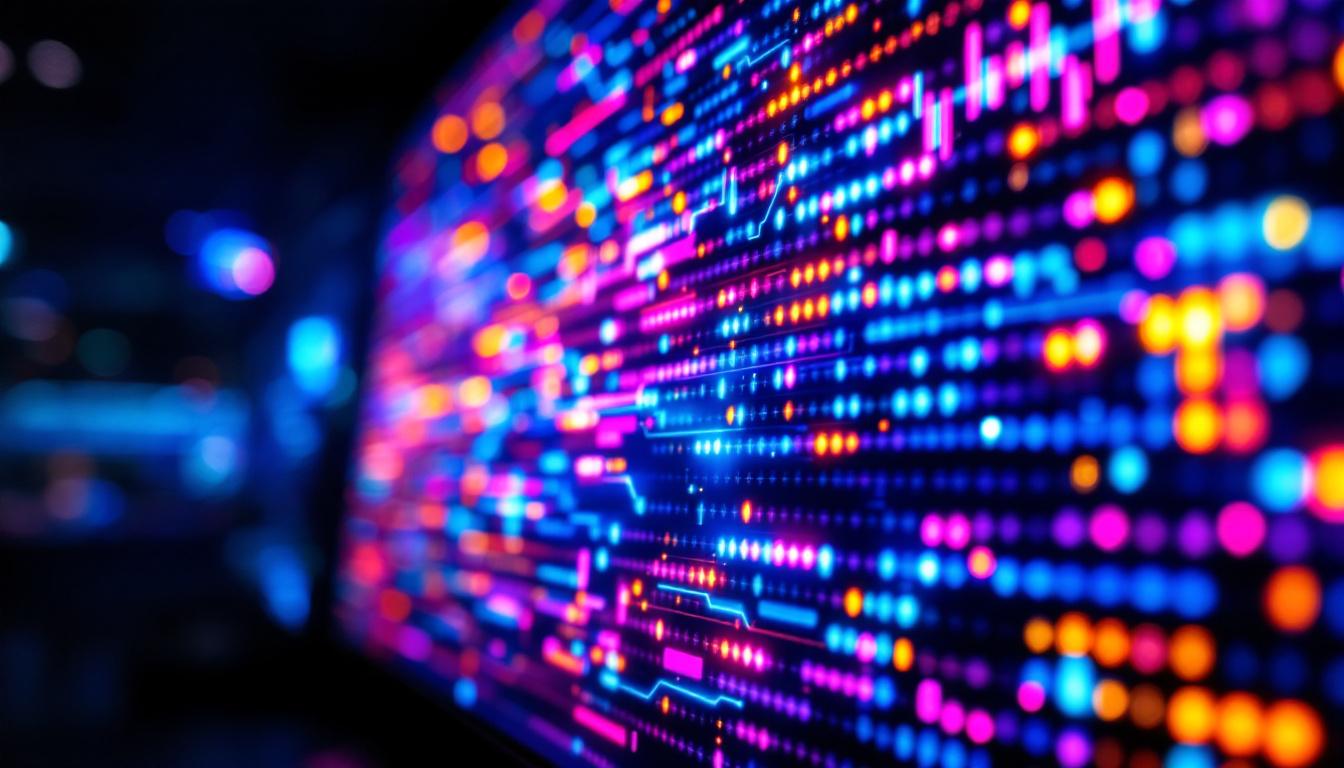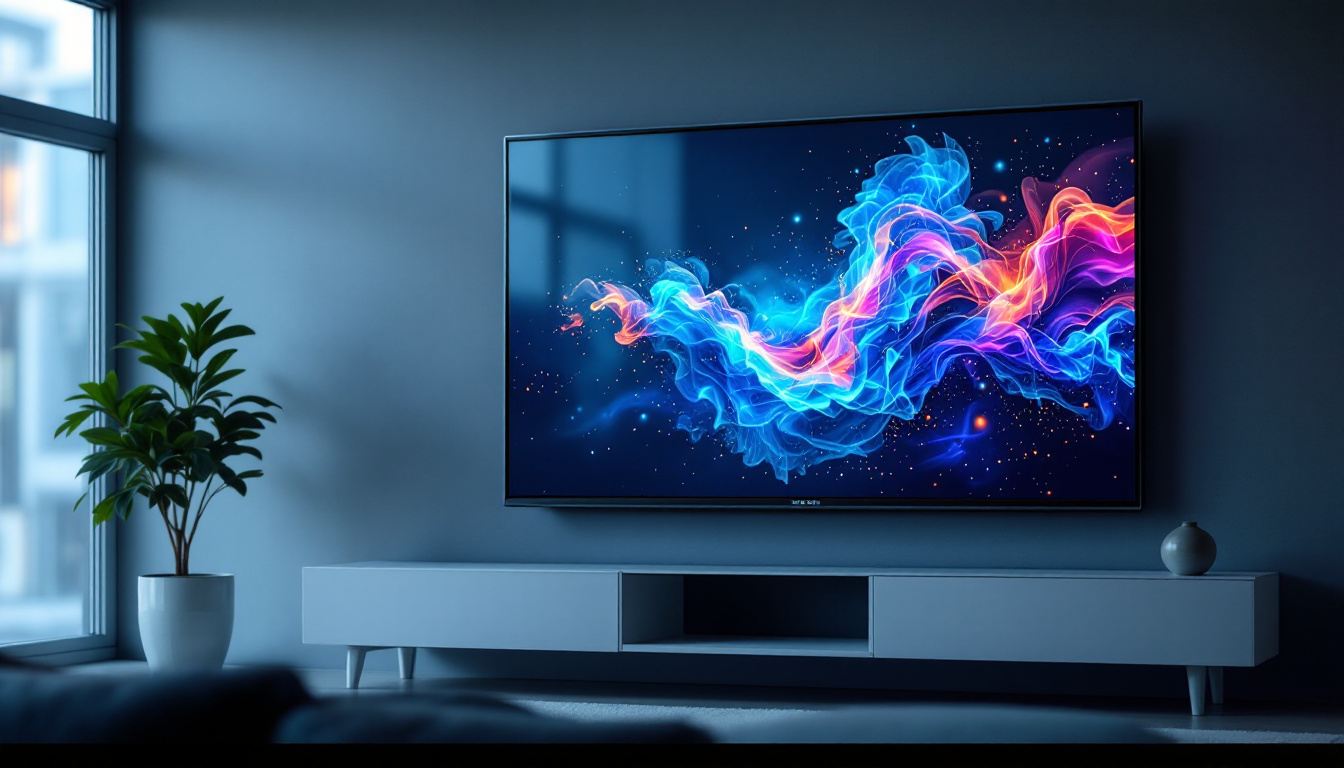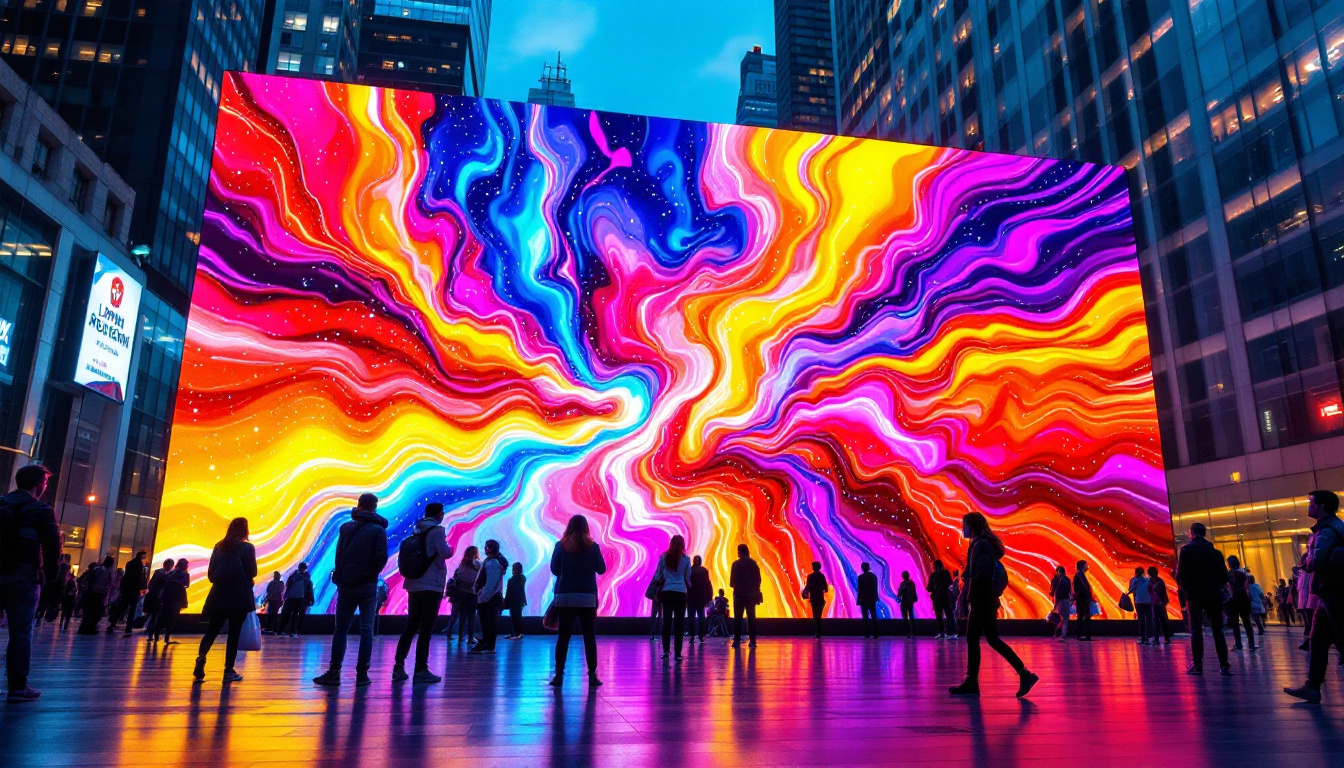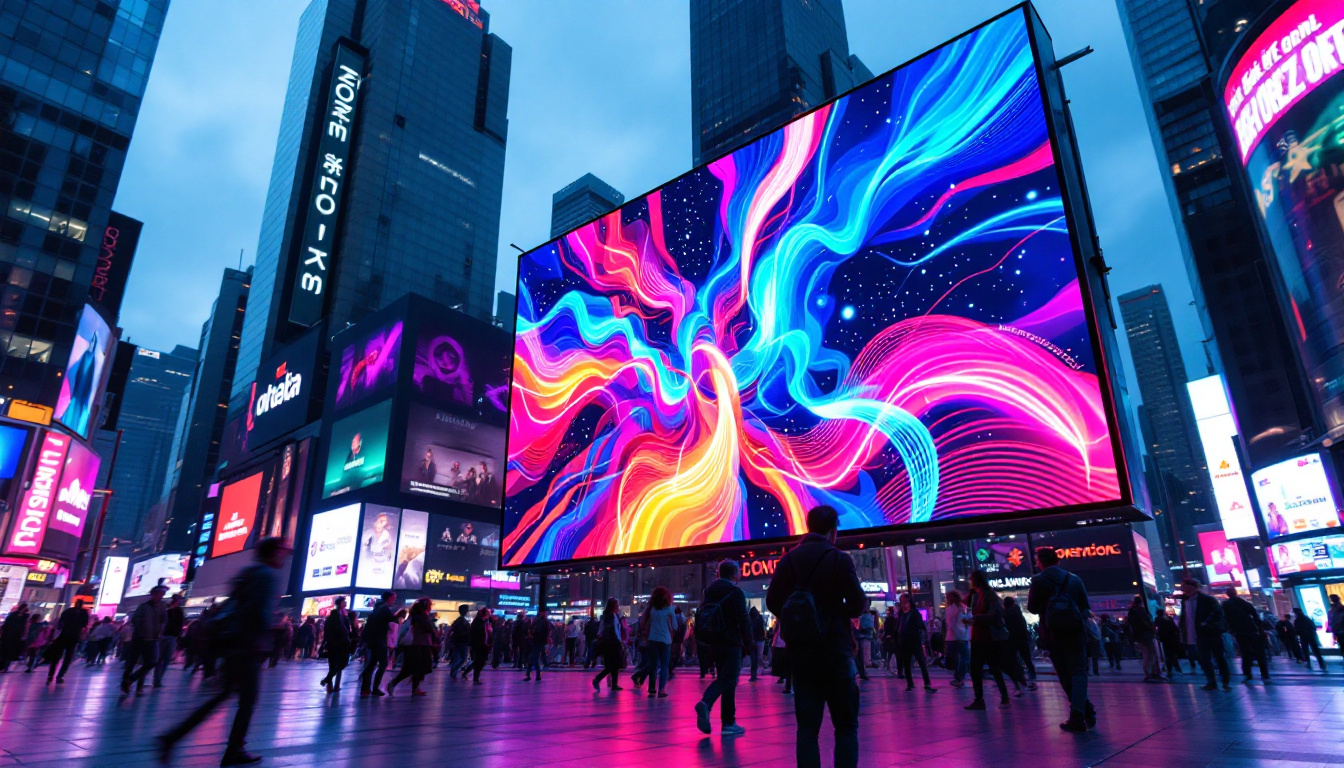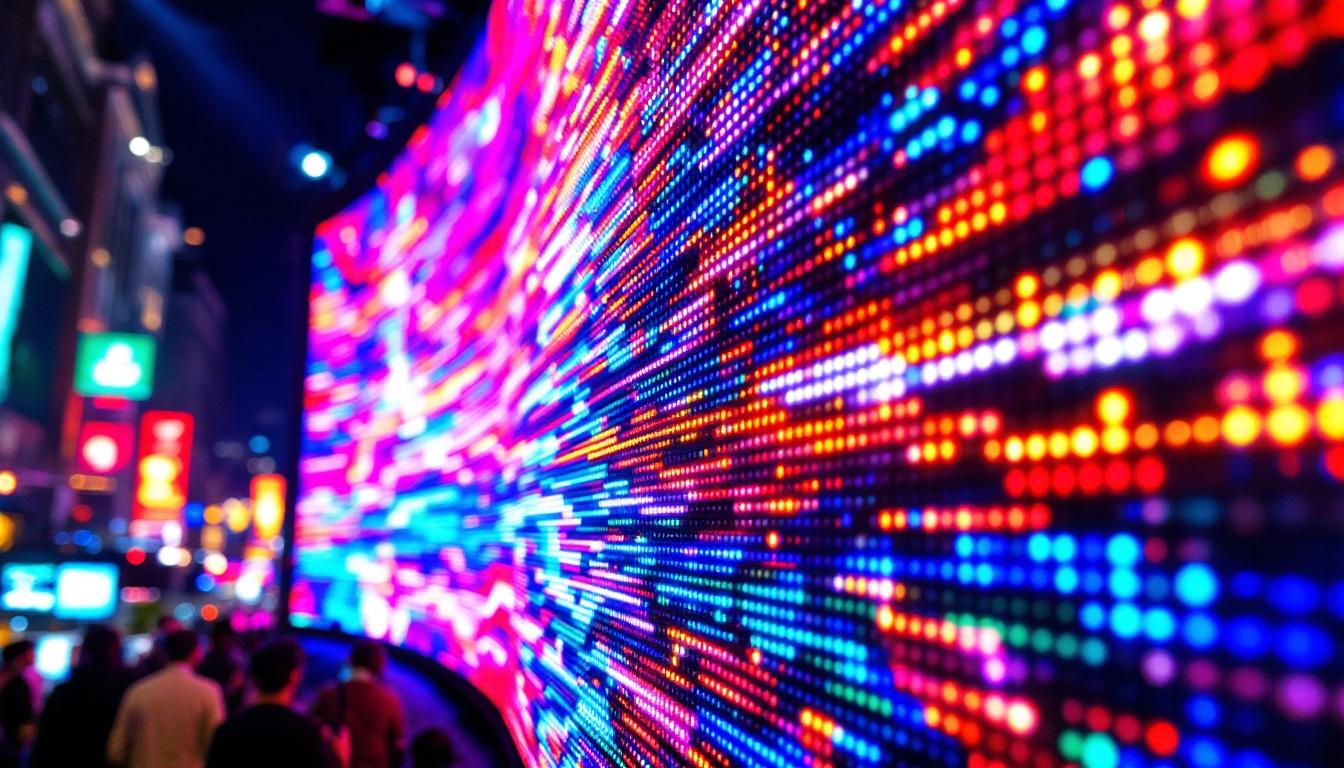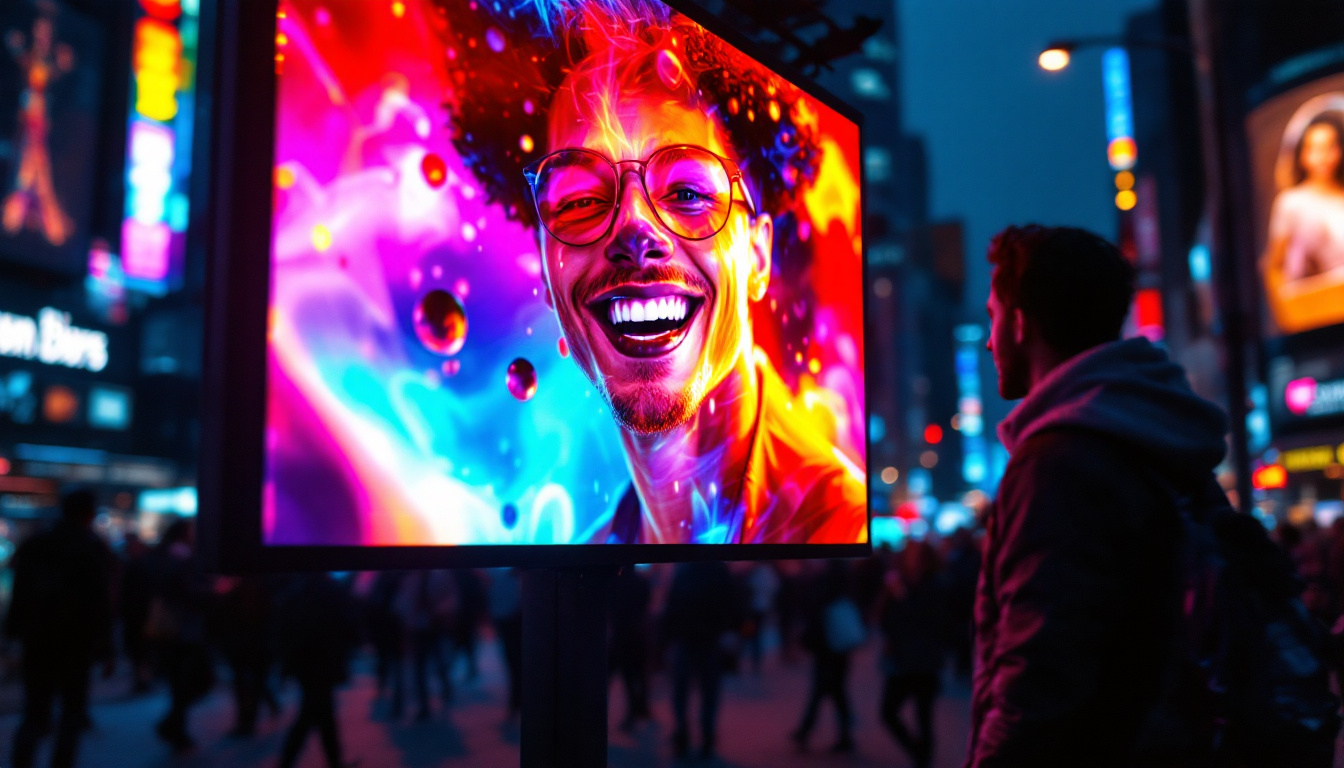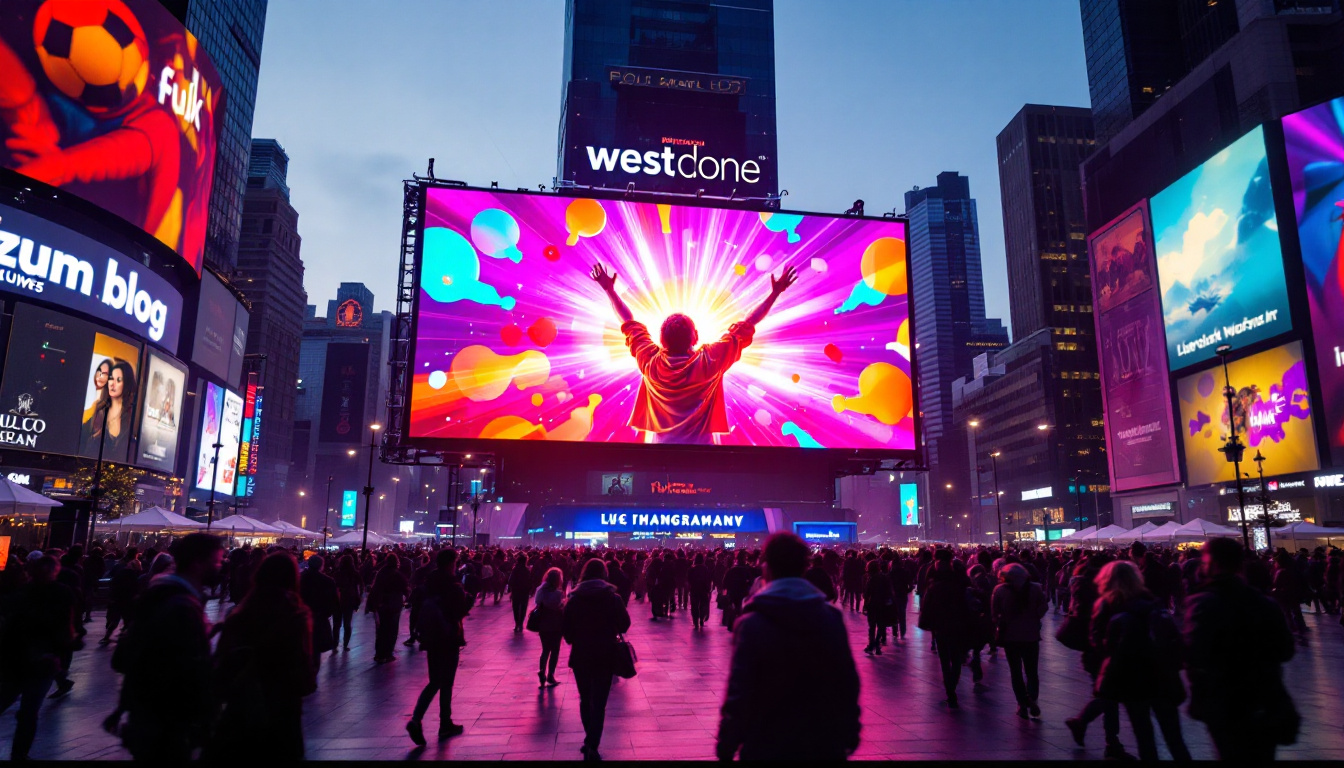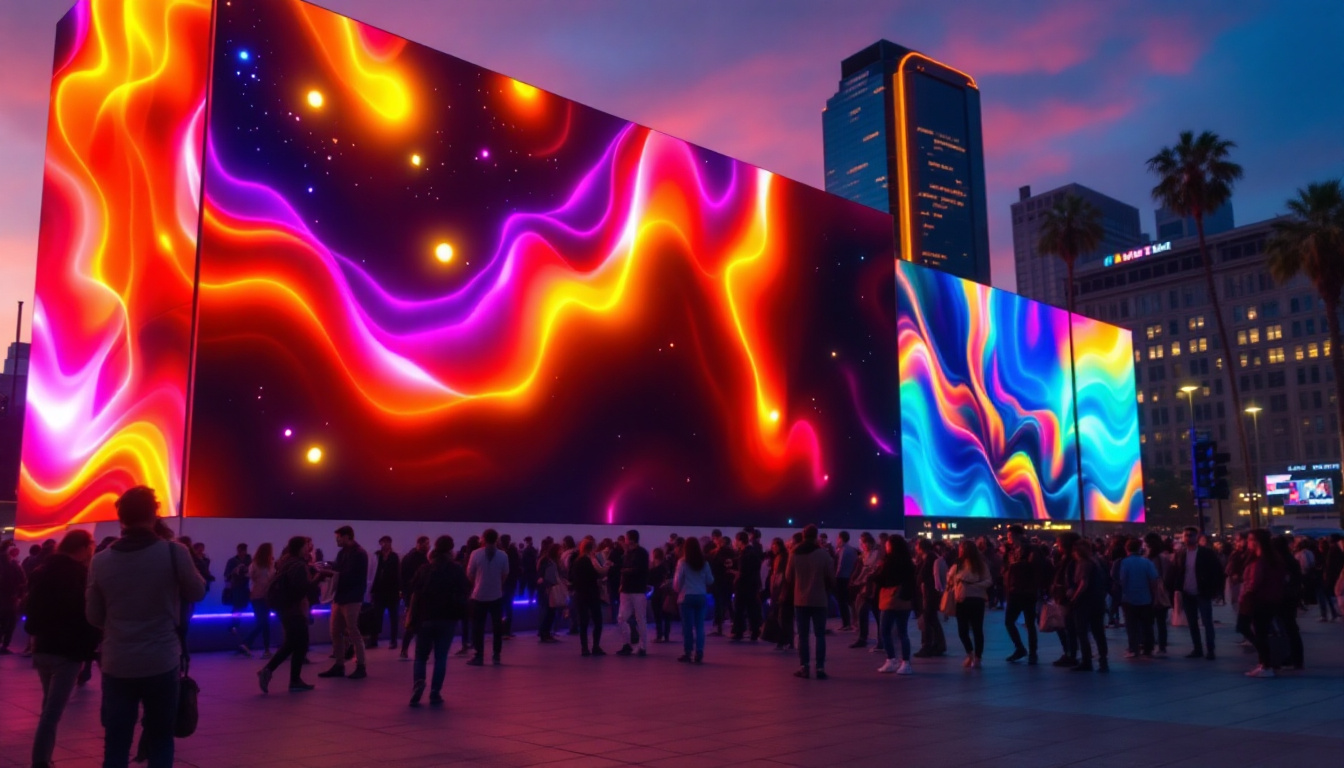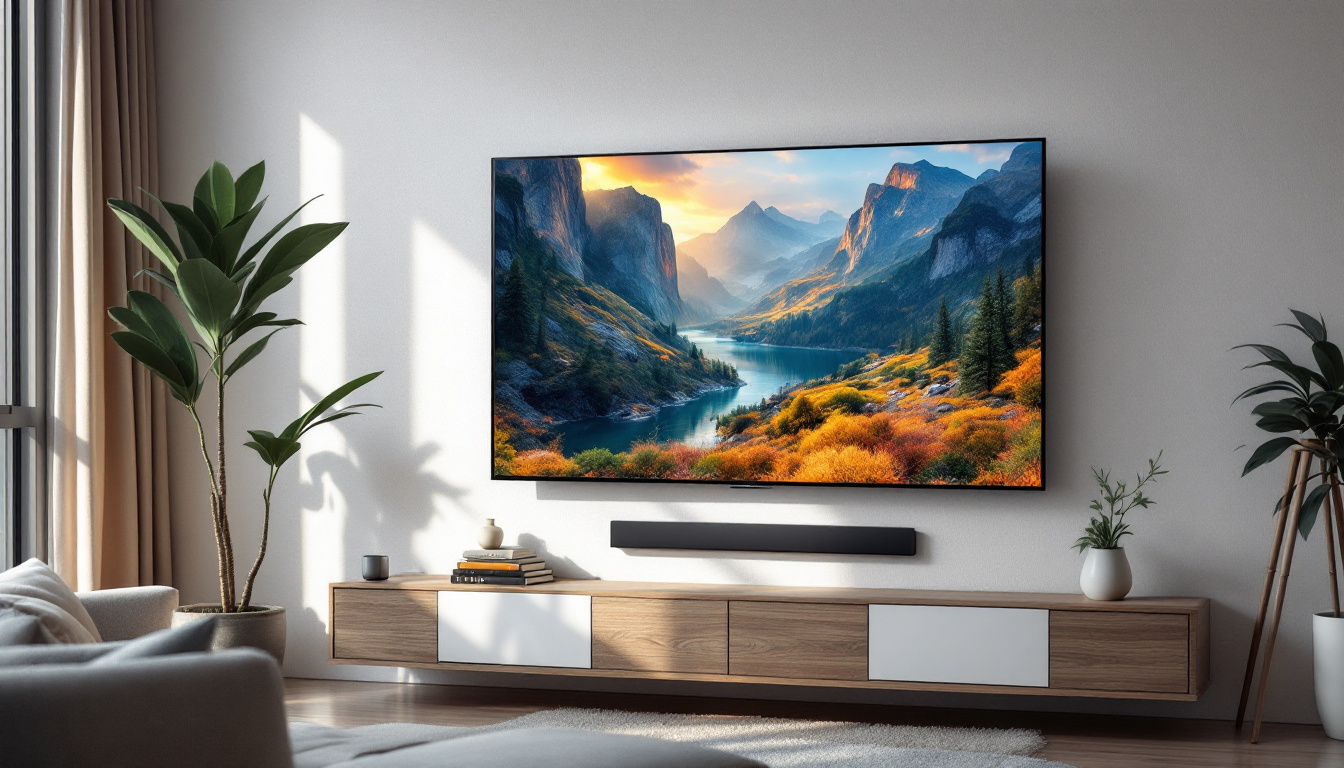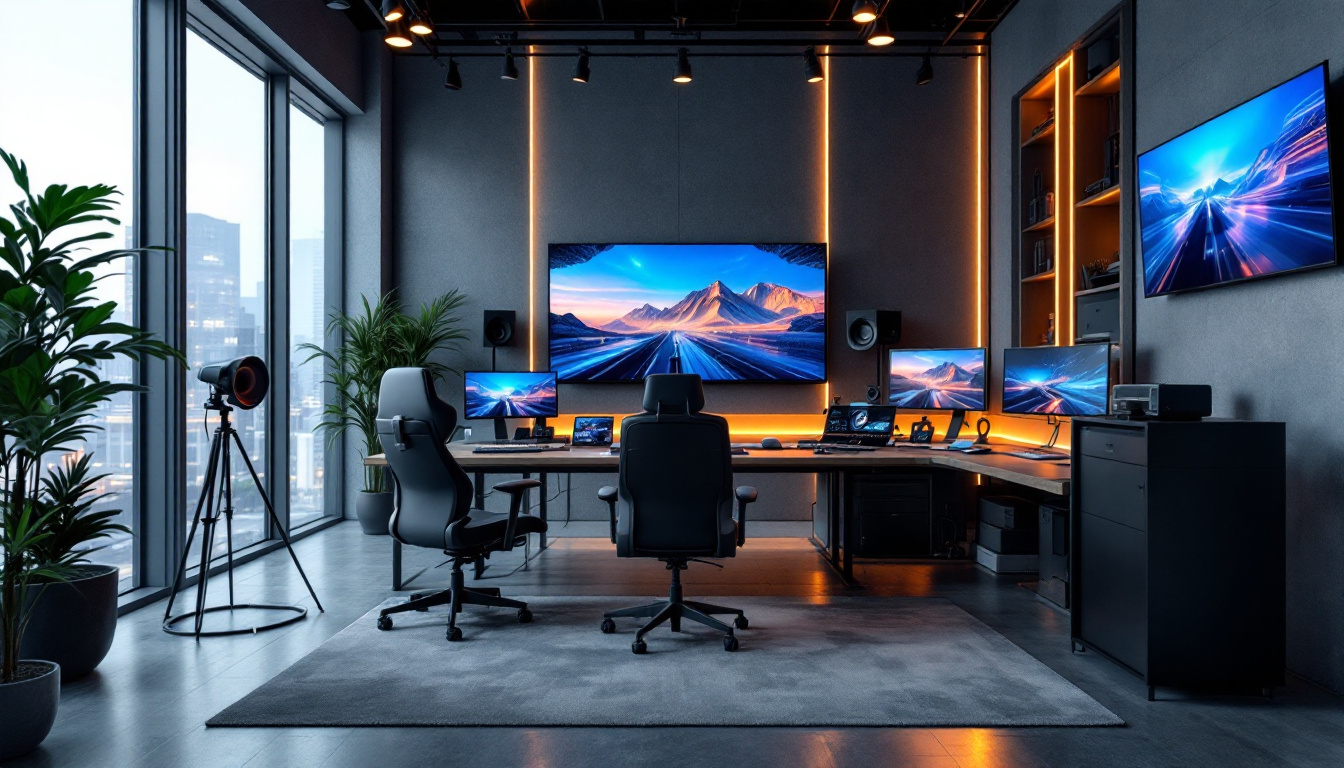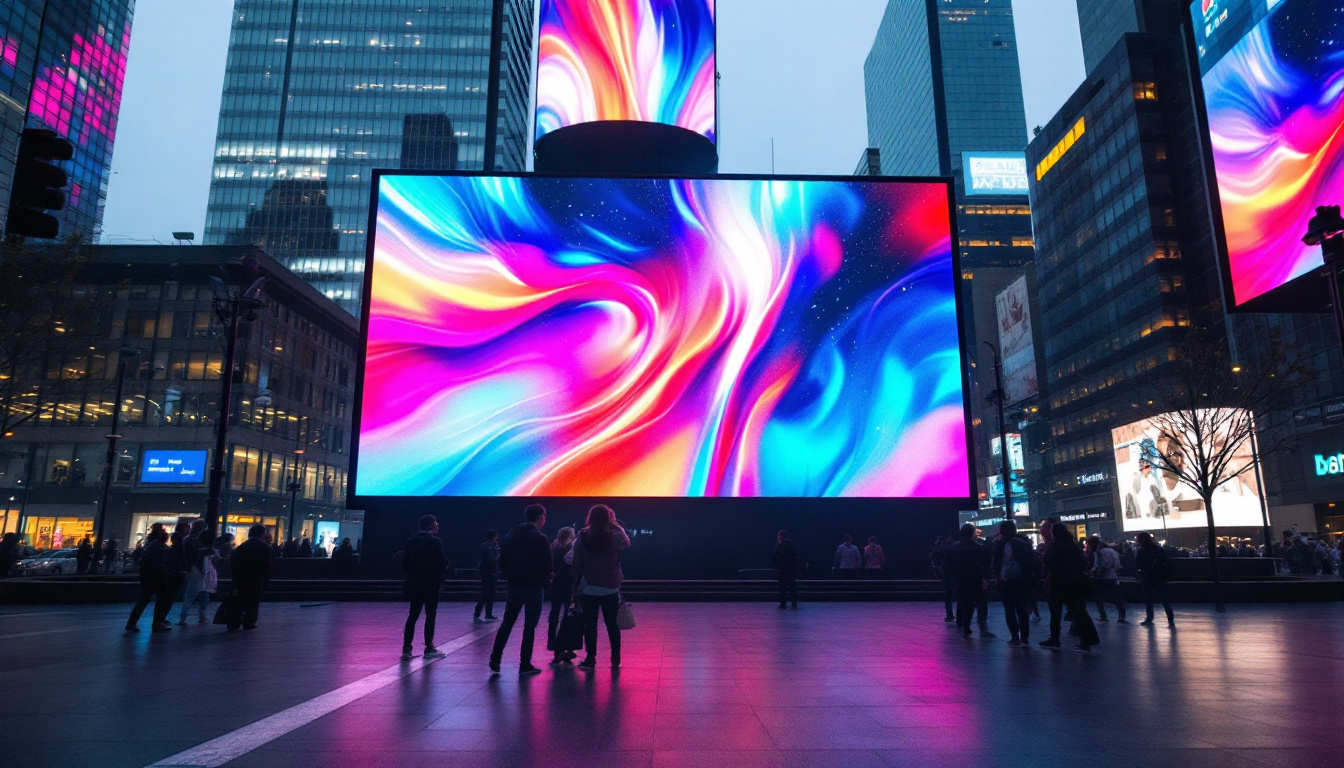In the realm of modern technology, LED displays have emerged as a cornerstone of visual communication. Their prevalence in various applications, from televisions to billboards, has transformed how information is conveyed and consumed. This article delves into the intricacies of LED displays, exploring their functionality, advantages, and the technology behind them.
Understanding LED Technology
LED, or Light Emitting Diode, is a semiconductor device that emits light when an electric current passes through it. This technology has revolutionized the display industry, offering numerous benefits over traditional display methods. From energy efficiency to longevity, LEDs have become the go-to choice for both consumer and commercial applications, making them an integral part of modern technology.
The Basics of LED Functionality
At its core, an LED display consists of thousands of tiny light-emitting diodes arranged in a grid. Each diode can emit different colors, allowing for the creation of vibrant images and videos. The combination of red, green, and blue (RGB) light from these diodes can produce a wide spectrum of colors. This RGB model is foundational in color theory and is essential for creating realistic and engaging visuals that capture the viewer’s attention.
When an electrical current is applied, the diodes light up, and by varying the intensity of the current, different colors and brightness levels can be achieved. This ability to control light output makes LED displays highly versatile and suitable for various applications. In addition, LEDs are known for their rapid response times, which is crucial for dynamic content such as video games and live broadcasts. Their durability and resistance to shock and vibration also make them ideal for outdoor use, where traditional lighting might fail.
Types of LED Displays
There are several types of LED displays, each designed for specific uses. The most common types include:
- Direct View LED Displays: These displays are made up of individual LED modules that are placed close together to create a seamless image. They are often used in large outdoor screens and digital billboards, where their brightness and clarity can be appreciated even in direct sunlight.
- LED-backlit LCD Displays: These displays utilize LED technology to illuminate an LCD screen. This combination enhances brightness and contrast, making them popular for televisions and computer monitors. The use of LED backlighting has also allowed manufacturers to create thinner and lighter screens, improving portability without sacrificing quality.
- Organic LED (OLED) Displays: OLED technology uses organic compounds to emit light, allowing for thinner displays with better color accuracy and viewing angles. These are commonly found in high-end televisions and smartphones. The self-emissive nature of OLEDs means that they can achieve true blacks by turning off individual pixels, resulting in an unparalleled contrast ratio that elevates the viewing experience.
Beyond these common types, there are also specialized LED displays such as MicroLED and MiniLED technologies. MicroLED displays consist of microscopic LEDs that can create stunningly high resolutions and are expected to play a significant role in the future of display technology. MiniLED, on the other hand, enhances traditional LCDs by using smaller LEDs for backlighting, allowing for finer control over brightness and contrast, which can significantly improve picture quality. As the technology continues to evolve, we can expect even more innovative applications and improvements in LED display technology, making it an exciting field to watch.
Advantages of LED Displays
LED displays offer numerous advantages that have contributed to their widespread adoption across various industries. Understanding these benefits helps to appreciate why they have become the preferred choice for many applications.
Energy Efficiency
One of the most significant advantages of LED displays is their energy efficiency. Compared to traditional incandescent or fluorescent displays, LED technology consumes significantly less power. This not only reduces electricity costs but also contributes to a lower carbon footprint, making LED displays an environmentally friendly option. Furthermore, the reduced energy consumption translates to less heat generation, which can enhance the overall performance and lifespan of the display, as excessive heat can lead to component failure in other types of displays.
Longevity and Durability
LED displays are known for their long lifespan, often lasting over 50,000 hours of continuous use. This longevity means less frequent replacements and lower maintenance costs. Additionally, LED technology is more robust than traditional display technologies, making them resistant to shocks and vibrations, which is particularly beneficial for outdoor applications. The durability of LED displays also extends to their resistance to environmental factors such as moisture and dust, making them ideal for use in a variety of settings, from bustling city streets to remote outdoor venues. This resilience ensures that they can withstand harsh weather conditions while continuing to deliver high-quality visuals.
High Brightness and Contrast
LED displays excel in brightness and contrast levels, making them suitable for various lighting conditions. Whether in a dimly lit room or under direct sunlight, LED displays maintain their visibility and clarity. This feature is crucial for outdoor advertising and public displays, where visibility is paramount. The ability to produce vibrant colors and deep blacks enhances the overall viewing experience, making LED displays popular for not just advertisements but also for entertainment venues like theaters and concerts. Additionally, advancements in LED technology have led to the development of HDR (High Dynamic Range) displays, which further improve the range of colors and brightness, allowing for more immersive and lifelike visuals.
The Technology Behind LED Displays
Understanding the technology behind LED displays provides insight into their functionality and performance. This section explores the components and processes that make LED displays work.
Pixel Configuration
The pixel configuration of an LED display plays a crucial role in image quality. Each pixel is made up of red, green, and blue sub-pixels, which can be controlled independently. The arrangement and density of these pixels determine the display’s resolution and clarity.
Higher pixel densities result in sharper images, making them ideal for applications requiring detailed visuals, such as digital signage in retail environments. Conversely, lower pixel densities may be sufficient for large outdoor displays viewed from a distance.
Color Calibration
Color calibration is essential for ensuring that LED displays reproduce colors accurately. Manufacturers often employ sophisticated calibration techniques to adjust the brightness and color output of each diode. This process ensures consistency across the display and enhances the overall viewing experience.
Control Systems
LED displays are equipped with advanced control systems that manage the input signals and adjust the output accordingly. These systems can process various media formats, allowing for dynamic content display. Additionally, many modern LED displays support remote management, enabling users to update content and monitor performance from anywhere.
Applications of LED Displays
The versatility of LED displays has led to their adoption across a wide range of industries. From advertising to entertainment, their applications are vast and varied.
Advertising and Marketing
One of the most prominent uses of LED displays is in advertising. Digital billboards and storefront displays utilize vibrant LED technology to capture the attention of passersby. The ability to change content quickly and easily allows businesses to promote special offers, events, or new products in real-time.
Entertainment and Events
In the entertainment industry, LED displays are used extensively in concerts, sports events, and theater productions. Large-scale LED screens provide audiences with immersive experiences, displaying live feeds, graphics, and animations that enhance the overall performance.
Public Information Displays
LED displays are also commonly used for public information purposes, such as transportation signage, wayfinding systems, and emergency alerts. Their high visibility and adaptability make them ideal for conveying critical information to large audiences efficiently.
Challenges and Considerations
While LED displays offer numerous advantages, there are also challenges and considerations that users should be aware of. Understanding these factors can help in making informed decisions about their implementation.
Initial Costs
The initial investment for LED display technology can be significant, especially for high-resolution models. While the long-term savings in energy and maintenance costs are substantial, the upfront costs may deter some businesses from making the switch.
Heat Management
LED displays generate heat during operation, which can impact performance and longevity if not managed properly. Adequate heat dissipation mechanisms, such as cooling fans or heat sinks, are essential to ensure optimal functioning and prevent damage.
Viewing Angles
While LED displays generally offer good viewing angles, some configurations may have limitations. It is crucial to consider the intended viewing distance and angle when selecting an LED display to ensure that the image quality remains consistent from various perspectives.
The Future of LED Display Technology
The future of LED display technology looks promising, with ongoing advancements poised to enhance performance and expand applications. Innovations in materials, design, and functionality are paving the way for even more sophisticated displays.
MicroLED Technology
MicroLED technology is one of the most exciting developments in the LED display space. It involves the use of microscopic LEDs to create displays with exceptional brightness, color accuracy, and energy efficiency. MicroLED displays are expected to revolutionize the market by offering high-resolution screens that are thinner and lighter than traditional LED displays.
Flexible and Transparent Displays
Another area of innovation is the development of flexible and transparent LED displays. These displays can be integrated into various surfaces, such as windows or curved structures, opening up new possibilities for advertising and design. The ability to create displays that blend seamlessly with their surroundings is set to change the landscape of visual communication.
Smart LED Displays
As technology continues to evolve, the integration of smart features into LED displays is becoming increasingly common. Smart displays equipped with sensors and connectivity options can adapt content based on environmental conditions or user interactions. This interactivity enhances engagement and provides a more personalized experience for viewers.
Conclusion
LED displays have transformed the way information is presented and consumed across various sectors. Their energy efficiency, longevity, and vibrant visual capabilities make them a preferred choice for businesses and organizations. As technology continues to advance, the future of LED displays promises even more innovations that will further enhance their functionality and applications.
Understanding the intricacies of LED technology is crucial for harnessing its full potential. Whether in advertising, entertainment, or public information, LED displays are set to remain a vital component of visual communication for years to come.
Explore Cutting-Edge LED Display Solutions with LumenMatrix
As you consider the future of visual communication and the role LED displays play in it, LumenMatrix stands at the forefront, ready to elevate your brand’s presence. With a comprehensive range of innovative LED display modules—from Indoor and Outdoor LED Walls to specialized solutions like Vehicle Displays, LED Posters, and Transparent Displays—LumenMatrix is committed to transforming your visual storytelling. Experience the next level of engagement with our LED Sports Displays, Floor LEDs, and Custom configurations, all designed to captivate and inspire. Check out LumenMatrix LED Display Solutions today and join the revolution in dynamic, impactful visual communication.

